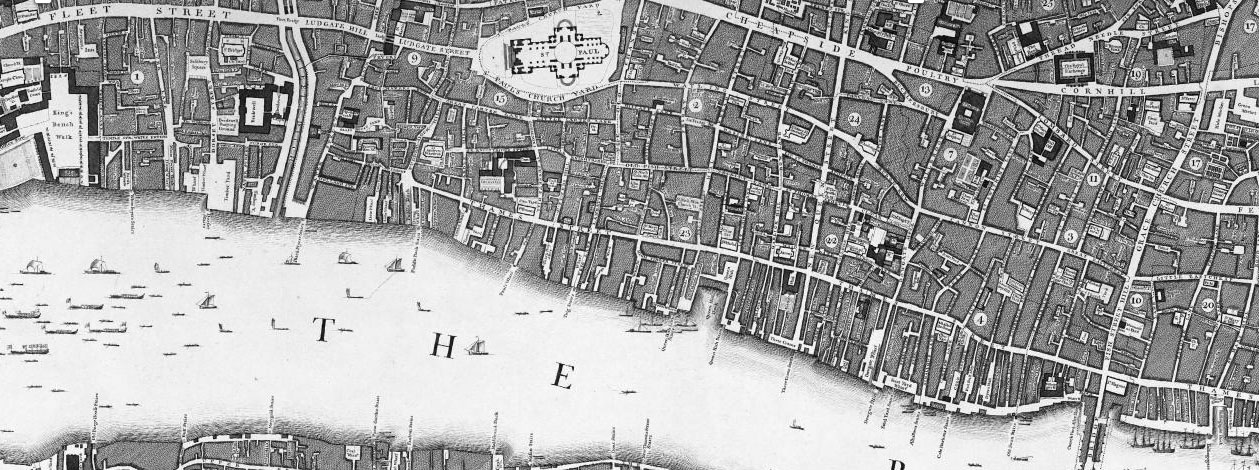Locating London´s Past created a GIS interface that enables researchers to map and visualize textual and artefactual data relating to seventeenth and eighteenth-century London against a fully rasterised version of John Rocque´s 1746 map of London and the first accurate modern OS map (1869-80). More than this, it made these data and maps available within a Google Maps container, allowing for the analysis of the data with open source visualization tools. 
Building on the partnerships created through the JISC funded Connected Histories project, and through a new collaboration with the Museum of London Archaeological Service (MOLA), Locating London´s Past produced a working GIS-enabled public web environment that allows existing electronic historical data about London to be repackaged and organised around space. The project incorporated four elements. First, a fully rasterised and GIS-enabled version of John Rocque´s 1746 map of London was created and tied to a GIS enabled version of the first reliable modern OS map (1869-80). Second, standard geo-referencing was incorporated into some 4.9 million lines of data drawn from the Old Bailey Online, London Lives, 1690-1800, datasets created by the Centre for Metropolitan History, and MOLA´s extensive database of archaeological finds. Third, using an API methodology, the historical GIS was presented for public use and re-use both online and as downloads, within a Google Maps `container´ (giving access to satellite images, `street views´ etc), to facilitate `mash-ups´ with modern datasets (geological, flooding, land use, etc). This in turn creates an environment in which additional external historical datasets and GIS enabled historical maps can be added.
By bringing within a single framework archaeological evidence of pipes and shards, and historical trial records, voting lists, insurance files and taxations records, this project contributed to the `spatial turn´ in humanities and social science scholarship, not just by making geographical analysis possible, but by making it readily accessible.
HRI Online Publication:
Project Team
- Dr Matthew Davies (Institute of Historical Research, University of London)
- Prof. Tim Hitchcock (University of Hertfordshire)
- Prof. Robert Shoemaker (University of Sheffield)
- Dr Sharon Howard (Project Manager – The Digital Humanities Institute)
- Jamie McLaughlin (Developer – The Digital Humanities Institute)
